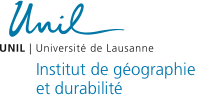Institute of Geography and Sustainability of the University of Lausanne
Research projects
"Au bon air des jardins". Climatic geohistory of urban parks and gardens (18th - 21st centuries), comparing Tours, Orléans and Lausanne
Parks and gardens have witnessed both metamorphoses and a certain continuity in their ecological functions (Mathis and Pépy 2017; Musée historique de Lausanne 2022). Renowned as refuges of pure air since the 18th century in cities considered unhealthy (Lefay 2015), they have become islands of coolness in cities heavily marked by heatwaves. From aerism and hygienism to ecologism and climate change, how have discourses, practices and developments evolved in these green spaces? Drawing on work in environmental geohistory (Valette and Carozza 2019), geography and political ecology (Depietri et al. 2016), the project shows how certain air-related concerns have been constructed and deconstructed over time in parks, with their important recreational functions, and gardens more marked by floral embellishment.
Focusing on the examples of Tours, Orléans and Lausanne, the main questions are as follows:
- How did parks and gardens develop in the three sites when social and health concerns favored these urban green lungs?
- How do the sites and situations of the gardens explain or influence scientific discourses on their"bon air" (Reichler 2005)? How have park and garden designs evolved in line with scientific discourse and expertise on air and climate?
- How do climate change adaptation policies use parks and gardens to promote their role as cooling agents?
Several qualitative methods are used, including archival research and interviews with green space managers and park and garden users.

